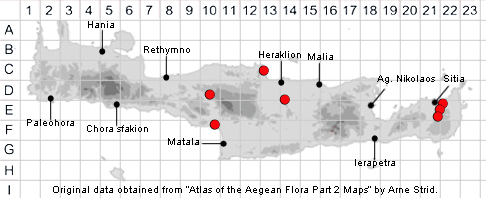SPECIES DESCRIPTION
MUSCARI COMMUTATUM
Family and Genus:- See- HYACINTHACEAE/Subgen. BOTRYANTHUS
Common Names:- None
Homotypic Synonyms:- Botryanthus commutatus, Hyacinthus commutatus.
Meaning:- Muscari (L) Musk-like (from the Turkish, moscos, fragrance).
Commutatum (L) Changed, altered.
General description:- A low to short bulbous perennial.
Bulbs:-
1) Occasionally producing offsets; tunic dark shiny brown.
Scape:-
1) 6-30 cm, about as long as the leaves.
Leaves:-
1) 2-5, 10-30 cm x 5-15 mm, linear to linear-lanceolate, canaliculate, margins
scarious.
Flower:-
1) Raceme, dense, ovoid. Fruiting raceme lax.
2) Pedicels,
a) of fertile flowers 2-6 mm, patent-deflexed, as long as or shorter than the
flowers.
b) of sterile flowers 1-3 mm.
3) Fertile flowers, 3·5-7 mm, obovoid-urceolate, strongly shouldered and
constricted, deep blackish-violet, with teeth.
4) Teeth, 0·5-1 mm. recurved concolorous
6) Sterile flowers, 2-4 mm, paler and smaller than the fertile.
Fruit:-
1) Capsule, 7-12 x 5-8 mm, oblong-ovoid or broadly ellipsoid.
Key features:-
1) Perianth, bright blue or blackish-blue, without dark blue stripes; concolorous;
tube and teeth blackish-blue.
2) Pedicels, patent or deflexed.
Habitat:- Open dry shrubby vegetation, scrubland vegetation, orchards, olive groves
and open woodland. 0-1100 m.
Distribution:- Throughout Greece, but less common in the W & N. - Italy and the
Balkans eastwards to the east Aegean Islands. On Crete confined mainly to the
Sitia region in the east and localised areas in the central.
Flowering time:- Feb-May.
Photos by:- Dr. Armin Jagel
